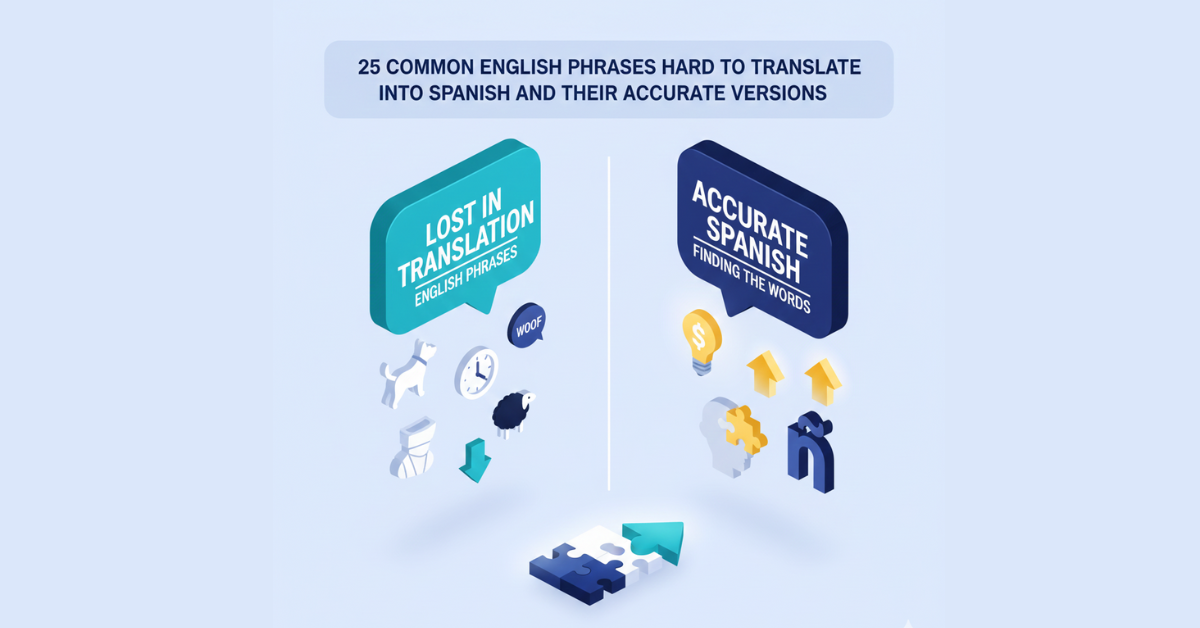Driving Digital Success with Content Analysis: Strategies to Maximize ROI
Jan 11, 2024, Nishi SinghIn today's digital age, businesses are constantly inundated with vast amounts of data. From website analytics to social media metrics, the sheer volume of information can be overwhelming. However, one key aspect that often gets overlooked is content analysis. Content analysis is the process of systematically analyzing and evaluating the content of various digital platforms to gain insights and make data-driven decisions. It involves identifying patterns, themes, and trends within the content to understand user preferences and behaviors. By harnessing the power of content analysis, businesses can drive digital success and maximize their return on investment (ROI).
What is Content Analysis and Why is it Important?
Content analysis is a research method used to analyze and interpret the content of various mediums, such as websites, social media platforms, and marketing materials. It involves collecting and examining qualitative and quantitative data to uncover meaningful insights and patterns. By understanding the content and its impact on the target audience, businesses can tailor their strategies, improve their messaging, and optimize their digital presence.
Content analysis is important because it allows businesses to gain a deeper understanding of their customers, competitors, and industry trends. It provides valuable insights into what resonates with the target audience, what drives engagement, and what influences purchasing decisions. By leveraging these insights, businesses can create more targeted and effective marketing campaigns, optimize their content strategies, and ultimately drive digital success.
Benefits of Content Analysis for Digital Success
Content analysis offers numerous benefits for businesses looking to achieve digital success. Firstly, it helps businesses understand their target audience better. By analyzing the content that resonates with their audience, businesses can gain insights into their preferences, interests, and behaviors. This knowledge can then be used to create more targeted and personalized content that engages and converts.
Secondly, content analysis helps businesses stay ahead of their competitors. By analyzing competitor content, businesses can identify gaps and opportunities in the market. They can also gain insights into successful strategies and tactics employed by their competitors and use this knowledge to refine their own approach.
Thirdly, content analysis enables businesses to measure the effectiveness of their content marketing efforts. By tracking key metrics such as engagement, conversions, and ROI, businesses can identify what works and what doesn't. They can then optimize their content strategies to drive better results and maximize their ROI.
In summary, content analysis provides businesses with valuable insights into their target audience, competitors, and content performance. By leveraging these insights, businesses can create more targeted and effective content strategies, stay ahead of the competition, and achieve digital success.
Key Components of Content Analysis
To conduct a successful content analysis, it is essential to understand the key components involved. These components include:
1. Define the Research Objective: Clearly define the research objective and the questions you want to answer through the content analysis. This will help guide the entire process and ensure you gather relevant and actionable insights.
2. Select the Content Sources: Identify the digital platforms and sources you will analyze. This can include websites, social media platforms, blogs, forums, and more. Choose sources that are relevant to your research objective and target audience.
3. Develop a Coding Scheme: A coding scheme is a set of predefined categories or themes that will be used to analyze the content. It helps ensure consistency and allows for easy comparison and analysis of the data. The coding scheme should be developed based on the research objective and can include categories such as sentiment, topics, and engagement metrics.
4. Collect and Analyze the Data: Collect the relevant data from the selected sources and input it into a data analysis tool or software. Analyze the data using the coding scheme and identify patterns, themes, and trends. This can be done manually or with the help of automated tools.
5. Interpret the Findings: Once the data has been analyzed, interpret the findings and draw insights and conclusions. Look for patterns, trends, and correlations that can inform your content strategy and decision-making process.
6. Communicate the Results: Finally, communicate the results of the content analysis to key stakeholders. Present the findings in a clear and concise manner, highlighting the key insights and recommendations.
By following these key components, businesses can conduct a comprehensive content analysis and gain valuable insights to drive digital success.
Tools and Techniques for Content Analysis
There are various tools and techniques available to assist businesses in conducting content analysis. These tools can help automate the process, save time, and provide more accurate and reliable results. Some popular tools and techniques include:
1. Automated Text Analysis Tools: These tools use natural language processing (NLP) algorithms to analyze text data and extract meaningful insights. They can analyze large volumes of text quickly and efficiently, saving businesses valuable time and resources.
2. Social Media Listening Tools: social media listening tools allow businesses to monitor and analyze social media conversations and mentions. These tools can help identify trends, sentiment, and influencers in real-time, providing valuable insights for content analysis.
3. Sentiment Analysis: Sentiment analysis is a technique used to determine the sentiment or emotion expressed in text data. It can help businesses understand how their content is being perceived by the audience and make adjustments accordingly.
4. Topic Modeling: Topic modeling is a technique used to uncover hidden topics or themes within a large volume of text data. It can help identify the most relevant and popular topics in a given domain or industry.
5. Data Visualization Tools: Data visualization tools can help businesses present the findings of their content analysis in a visually appealing and easy-to-understand format. They can transform complex data into interactive charts, graphs, and dashboards, making it easier for stakeholders to interpret and make data-driven decisions.
By leveraging these tools and techniques, businesses can streamline their content analysis process and gain deeper insights into their digital performance.
Steps to Conduct a Content Analysis
To conduct a content analysis effectively, it is essential to follow a systematic approach. The following steps can guide businesses through the process:
1. Define the Research Objective: Clearly define the research objective and the specific questions you want to answer through the content analysis. This will help focus the analysis and ensure you gather relevant insights.
2. Select the Content Sources: Identify the digital platforms and sources you will analyze. This can include websites, social media platforms, blogs, forums, and more. Choose sources that are relevant to your research objective and target audience.
3. Gather the Data: Collect the relevant data from the selected sources. This can be done manually by extracting the content or by using automated tools that scrape the data.
4. Develop a Coding Scheme: Develop a coding scheme that aligns with your research objective. This coding scheme should include predefined categories or themes that will be used to analyze the content.
5. Code the Data: Code the data based on the coding scheme. This involves categorizing the content into the predefined categories or themes. It can be done manually or with the help of automated tools.
6. Analyze the Data: Analyze the coded data to identify patterns, themes, and trends. Look for insights that can inform your content strategy and decision-making process.
7. Interpret the Findings: Interpret the findings of the content analysis and draw actionable insights. Look for correlations, trends, and opportunities that can drive digital success.
8. Communicate the Results: Finally, communicate the results of the content analysis to key stakeholders. Present the findings in a clear and concise manner, highlighting the key insights and recommendations.
By following these steps, businesses can conduct a thorough and effective content analysis and leverage the insights to drive digital success.
Analyzing Content Performance and ROI
One of the key goals of content analysis is to measure the performance and ROI of content marketing efforts. By analyzing content performance, businesses can identify what works and what doesn't, and optimize their strategies to drive better results.
To analyze content performance and ROI, businesses should track and measure key metrics such as engagement, conversions, and revenue. These metrics can provide insights into the effectiveness of the content in driving user behavior and generating revenue.
Additionally, businesses can conduct A/B testing to compare the performance of different content variations or strategies. By testing different elements such as headlines, visuals, and calls to action, businesses can identify what resonates best with their audience and optimize their content accordingly.
Furthermore, businesses should also consider the lifetime value of their content. Some content may continue to generate value and ROI over an extended period, while others may have a shorter lifespan. By analyzing the long-term impact of content, businesses can prioritize their efforts and resources on creating evergreen content that continues to drive results.
By consistently analyzing content performance and ROI, businesses can make data-driven decisions, refine their strategies, and maximize their digital success.
Strategies to Maximize ROI through Content Analysis
Content analysis can unlock valuable insights that can help businesses maximize their ROI. Here are some strategies to leverage content analysis for better ROI:
1. Audience Segmentation: Use content analysis to identify different audience segments based on their preferences, interests, and behaviors. By tailoring content to specific segments, businesses can deliver more relevant and personalized experiences, increasing engagement and conversions.
2. Content Optimization: Analyze the performance of different types of content, such as articles, videos, and infographics. Identify the formats and topics that resonate best with your audience and optimize your content strategy accordingly. This can help increase engagement and drive better results.
3. SEO Optimization: Analyze the keywords and topics that drive organic traffic to your website. Identify high-performing keywords and optimize your content to rank higher in search engine results. This can increase visibility and drive more organic traffic, ultimately leading to better ROI.
4. Social Media Strategy: Analyze the performance of your social media content and identify the platforms, topics, and formats that generate the most engagement. Use this insight to optimize your social media strategy and focus your efforts on the platforms that deliver the best ROI.
5. Influencer Marketing: Analyze the impact of influencer collaborations on your content performance and ROI. Identify the influencers that resonate best with your audience and leverage their influence to drive engagement and conversions.
6. Content Personalization: Use content analysis to understand the preferences and interests of your audience. Leverage this insight to deliver personalized content experiences that cater to individual needs and drive better results.
By implementing these strategies and leveraging the insights gained from content analysis, businesses can maximize their ROI and drive digital success.
Conclusion: Driving Digital Success with Content Analysis
In conclusion, content analysis is a powerful tool that businesses can leverage to drive digital success and maximize their ROI. By analyzing and evaluating the content of various digital platforms, businesses can gain valuable insights into their target audience, competitors, and content performance. These insights can then be used to create more targeted and effective content strategies, optimize marketing efforts, and make data-driven decisions.
To conduct a successful content analysis, businesses should define clear research objectives, select relevant content sources, develop a coding scheme, and utilize tools and techniques for data analysis. By following a systematic approach and leveraging the right tools, businesses can gain deep insights into their digital performance and drive better results.
By consistently analyzing content performance and ROI, businesses can refine their strategies, optimize their content, and maximize their digital success. Content analysis provides businesses with the opportunity to unlock valuable insights and make data-driven decisions, ultimately leading to better ROI and a competitive advantage in the digital landscape.
Remember, myTranscriptionPlace provides content analysis services, combined with human analysts' meticulous oversight. Bought to life with immersive data visualization and a comprehensive analysis process. So, start driving your digital success with content analysis today!






